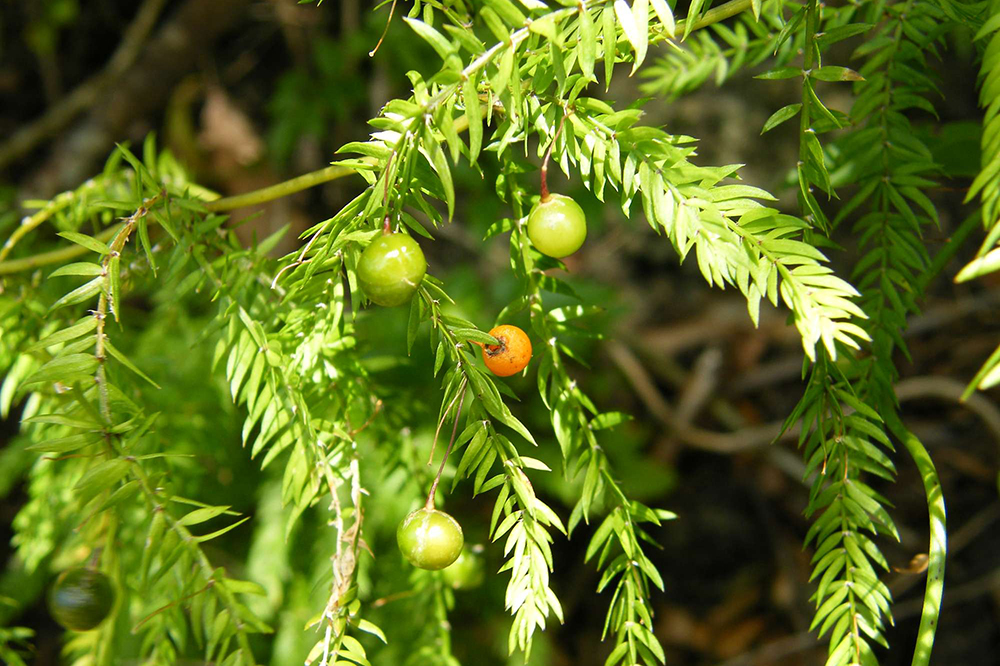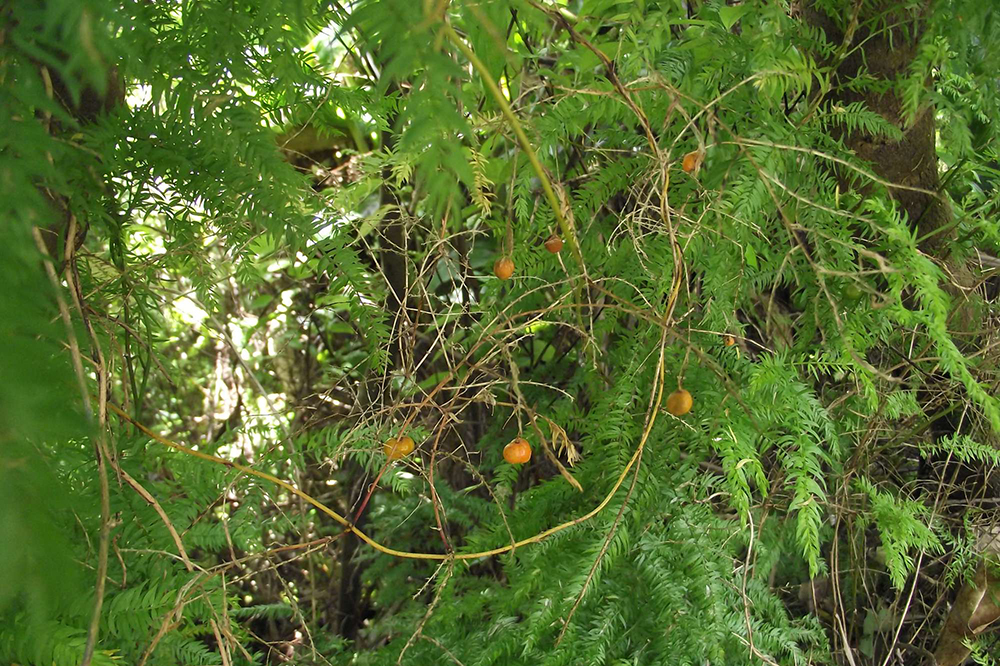Story
Climbing asparagus – The feathery assassin
By Sara Brill, Biosecurity Specialist – Pest Plant Partnerships at Northland Regional Council
Climbing asparagus (Asparagus scandens) may appear harmless with its feathery, fern-like foliage but beneath its delicate façade lies a true menace, capable of smothering huge areas of native bush. Once favoured by florists and gardeners, it is now loose in our forests and continuing to spread. Of the many weed threats Northland is facing, climbing asparagus is one of the worst.
It has several nasty characteristics that put it near the top of the list of what are known as ‘transformer’ weeds; those weeds that can cause massive change and the eventual collapse of a forest. It is shade tolerant, allowing it to grow under the canopy in mature forest. Its vines form dense nets that gradually cover the entire forest floor and subcanopy up to 5m high, smothering all plant life in this zone. This prevents new seedlings from growing, meaning the forest can’t replace itself. The strong, wiry stems wrap around trees like a torniquet, damaging trunks and branches as they grow. Finally, its berries are eaten and spread by birds into new forest areas.
Protecting our forests from weeds needs a collective effort; if many individuals take action on their own land and by coming together in their neighbourhoods, we can prevent the region’s unique habitats and ecosystems from being overwhelmed and replaced by weeds like climbing asparagus.
Climbing asparagus can be challenging to control once it gets to the ‘dense net’ stage, so early recognition and control while infestations are still small is the best approach.
What it looks like
Climbing asparagus is a long-lived scrambling vine. It has flat, feathery, fern-like leaves (5-15cm long) and thin, wiry stems. Tiny white flowers appear from September to December and are followed from October to February by round berries (8mm diameter) that ripen from green to orange.

Climbing asparagus and its berries. (Photo: Weedbusters).

The strong, wiry stems of climbing asparagus. (Photo: Weedbusters).
How to control it
Physical control:
- Dig or cut out the crown where the roots and stems meet. Hang it in a tree to dry out or dispose of it at a refuse transfer station, burn or bury deeply. Other plant material can be left on site to rot down.
Herbicide control:
Please note: When using herbicide, please make sure to protect yourself by reading labels thoroughly and following all instructions and safety requirements.
The mixing rates given below are the standard rates. However recent trial work on Waiheke Island suggest that even a very low rate of 33ml glyphosate (360g/L) per 10 litres water is effective and reduces the risk of killing other plants.
- In autumn/winter (in frost-free areas only on healthy growth), spray foliage with 300ml glyphosate (360g/L) per 10L water.
- In spring-early summer, lightly spray foliage with 200ml glyphosate (360g/L) per 10L water.
For the methods above, don’t add any penetrant. This prevents herbicide being absorbed through the trunk and killing large canopy trees.
Infestations of plants taller than 60cm can be cut at a height of 30-60cm, then this lower vegetation can be carefully sprayed. The remaining cut material will die without the need for treatment.
Spot spray any missed plants within 30-60 days. Ongoing follow up control will be needed on new seedlings.
For more information on climbing asparagus and other pest plants, contact Northland Regional Council on 0800 002 004 and ask to speak to a biosecurity officer, or visit www.nrc.govt.nz/pestcontrolhub
